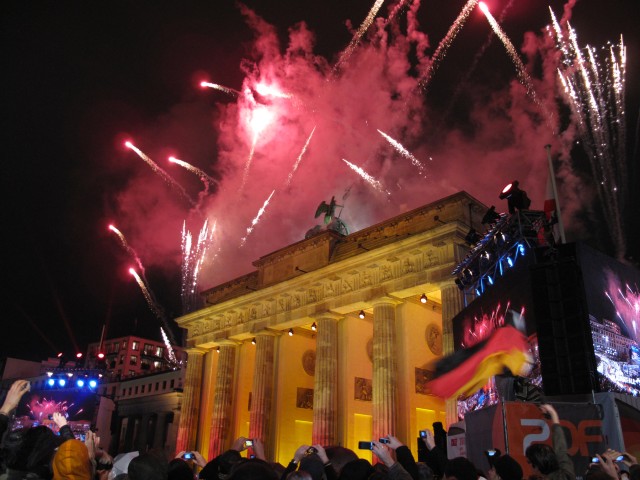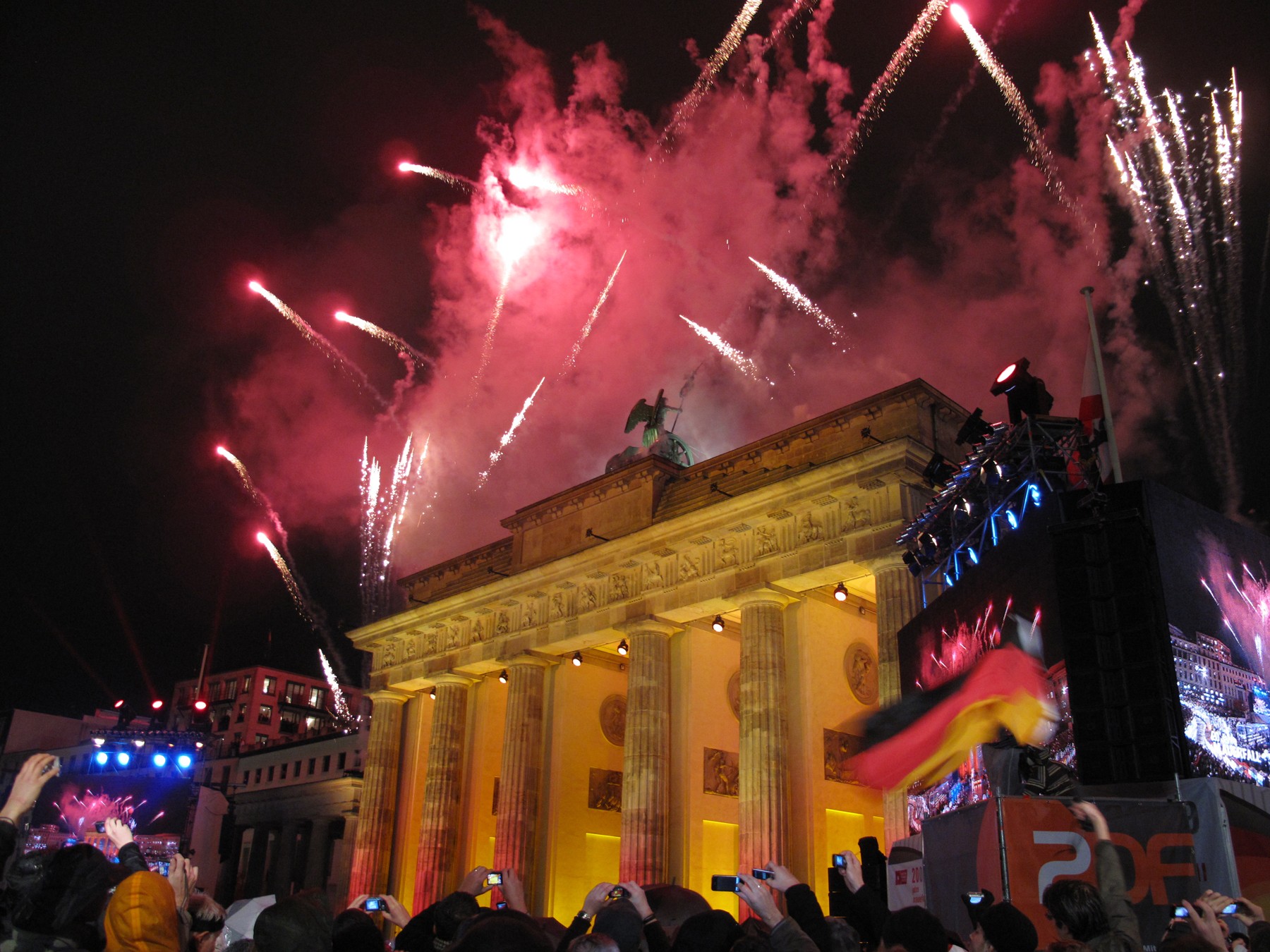BERLIN (Nov. 9, 2009) -- Cold War-era Berlin Wall patrols were a visible message to the East and West German people and the Soviet Union that the U.S. and its allies stood ready to defend West Berlin and democracy.
For U.S. Soldiers assigned to the former U.S. Army Europe Berlin Brigade, it was a strategic message delivered in tactical terms, said Dr. Harold E. Raugh Jr. of the V Corps command history office during a Nov. 5 ceremony here for the opening of the Allied Museum's "Wall Patrol" exhibit.
"Soldiers were expected to fight like hell if necessary for U.S. rights and a free Berlin," Raugh said. "I'm sure this was the same for our allies."
The exhibition is one of many events -- several of which include participation by members of U.S. Army Europe -- which have been taking place in Berlin in honor of the 20th anniversary of the fall of the Berlin Wall, which is celebrated Nov. 9.
Other keynote speakers at the opening event were museum director Dr. Helmut Trotnow, Sir Christopher Mallaby, former British ambassador in Bonn from 1988-1993, and Gen. Francois Cann, French city commandant of Berlin from 1987-1990.
"Or mission was twofold: First, show the flag; our American presence we would reassure the West Berliners that (we were) there to defend them to the death if necessary," Raugh told the audience. "We were there to show the East Germans and the Soviets that we meant business."
"Our allies shared the same philosophy and the same mission," he added.
Thirty-one years ago to the day of his museum address, Raugh, a retired lieutenant colonel, reported to the brigade's 2nd Battalion, 6th Infantry Regiment and was assigned to its scout platoon. The three-year tour of duty was the 22-year-old lieutenant's first assignment. In addition to patrolling the Wall, Raugh also performed guard duty at the city's infamous Spandau Prison.
The second part of a patrol's mission was to observe and report, he continued. Wall patrols were "low-grade intelligence gathering agencies" tasked with looking for concentrations of East German border guards or Soviet troops, repairs or new construction to the wall.
Any damage to the wall was an indication of an escape attempt, he explained.
A typical patrol consisted of two, three-man crews in jeeps equipped with pedestal-mounted M-60 machine guns. There were four patrols a week and the teams made their rounds on random days and varied their starting times and locations, he said.
Although the most common view of the Berlin Wall is a 27-mile-long concrete barrier through the heart of the city, there were two parts to the blockade: one separating the eastern and western parts of the city and a 70-mile long blockade separating the Allied enclave from East Germany.
Wooden observation platforms were set up along the wall, Raugh said.
"I do not know who built those, but they were really handy," he remembered. "We used those platforms to observe the other side of the wall. They also increased our visibility to West and East Berliners. They could see us up there doing our job."
During his time with the brigade, Raugh and his Soldiers drove by what is known as the "second- and third-generation wall," a barrier of stacked 6-foot-long, 2-foot-wide concrete slabs. "They were crude and not overly effective," he said.
Patrols carried live ammunition, but the Soldiers' weapons were not "locked and loaded," Raugh said.
Although the operations followed a pattern, they were never routine.
"We were not sure what would happen at any time, but we would always try to be prepared as possible," he said. "You never knew what was going to happen. It was not scary, but your senses were heightened."
Raugh said his patrols would observe East German soldiers, many conscripts, manning towers about 100 feet away from the allied side of the wall.
Many did not want to be there, he said. Some would wave their "short timers' chains" to the passing U.S. patrols.
"We recognized that they were conscripts and they were under control of the Soviet forces," Raugh said. "A lot of them did not want to be there. We could tell they were under the thumb of the Soviets."
The wall patrols were one of the Berlin Brigade's most visible and vital missions, Raugh said.
"Every day it was those stout-hearted allied Soldiers -- American, British and French -- by their professionalism, by their presence and by their performance, that we defended West Berlin and kept the city free."
(Dave Melancon writes for U.S. Army Europe Public Affairs.)


Social Sharing